We explore the life and work of Michelangelo, and discuss his main characteristics and legacy.
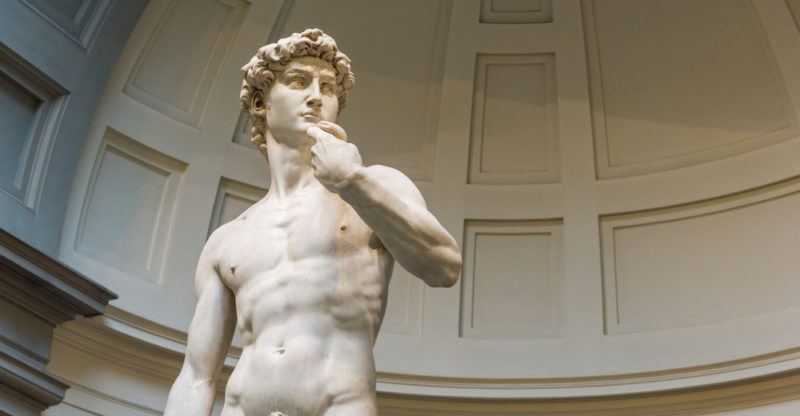
Who was Michelangelo?
Michelangelo Buonarotti, known as Michelangelo, was an Italian Renaissance sculptor, architect, and painter regarded as one of the greatest artists in human history.
His career, which developed in Florence and Rome, spanned an uninterrupted period of seventy years, under the patronage of the Medici family from Florence and various Roman Popes.
Michelangelo epitomizes the archetypal Renaissance artist, whose work embodies the spirit of the era taking up classical Greco-Roman tradition and merging it with Christian motifs.
His works are imbued with an enormous expressive power and a degree of realism so profound that his contemporaries, admirers of his genius, referred to as terribilità ("terrible"). Thus they tried to express the unique and overwhelming style of Michelangelo's creations.
Michelangelo's legacy is of unparalleled influence to humanity, inspiring artists and thinkers for many generations to come. His works have even been reproduced in numerous formats, clothing and objects of mass consumption.
- See also: Leonardo da Vinci
Birth of Michelangelo
Michelangelo was born in Caprese, a village in Tuscany, on March 6, 1475.
He was the second of five male children born to Ludovico di Leonardo Buonarroti and Francesca di Neri del Miniato di Siena.
His mother died when Michelangelo was only six years old.
His family, which had once been wealthy but had fallen on hard times, relied on income from a small estate in Settignano and a marble quarry in Florence.
Due to family problems, Michelangelo was for a time under the care of one of the family's master stonemasons. Later in life he would recall this man's wife as his wet nurse, to whom he owed not only the milk he suckled, but also his passion for sculpture.
Biography of Michelangelo
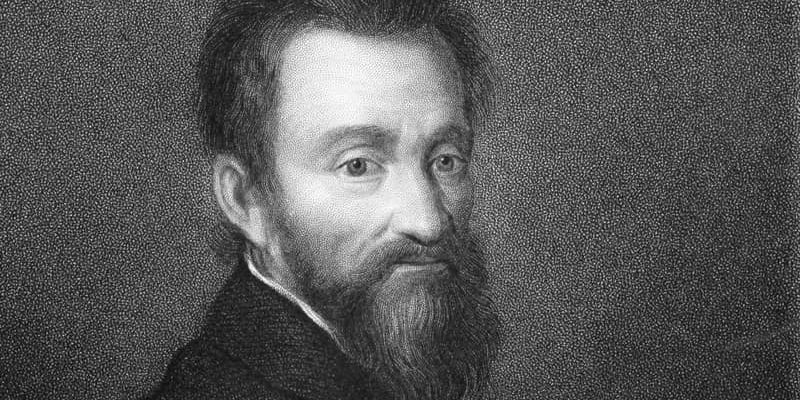
Michelangelo did not receive the support of his family when he decided to pursue art, as it was not a highly-regarded profession at that time.
Nevertheless, he managed to enter the workshop of renowned Domenico and Davide Ghirlandaio, with whom he studied for three years.
Afterwards, he moved to the Medici family's Garden of San Marco, under the guidance of Bertoldo di Giovanni. According to the latter's account, a punch received during this period left Michelangelo with his characteristic flat nose forever.
Michelangelo had numerous patrons throughout his life, the first of whom was Lorenzo the Magnificent. Upon Lorenzo's death in 1492, the artist wandered through Venice and Bologna, eventually arriving in Rome.
While in Rome, he produced his first major works, which brought him under the patronage of political figures of great importance in Italy. Through their commissions Michelangelo established himself as the great master who has gone down in history.
The last years of his life were spent in Rome, dedicating himself mainly to architectural works and teaching his disciples.
In this final period, disillusioned with humanity, he focused his interests on religious poetry and drawings, leaving his project of the Vatican Basilica unfinished at his death.
Love life of Michelangelo
Michelangelo had many homosexual lovers, including the young poet Giovanni da Pistoia, who dedicated beautiful and passionate sonnets to him.
He also fell in love with the young Tommaso Cavalieri, a well-to-do art lover, when Michelangelo was already 57 years old.
Later in life, the artist met Vittoria Colonna, a widow who represented for him Dante's Beatrice, and with whom he cultivated an ardent and aesthetically inspired friendship. Her death in 1547 plunged the artist into profound grief.
Main sculptures by Michelangelo
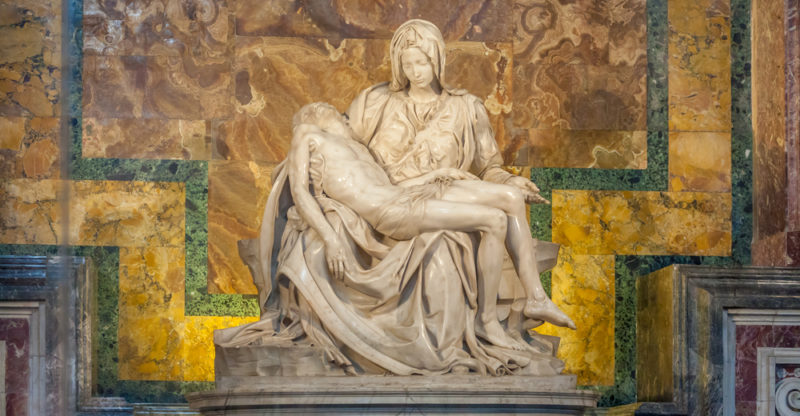
Michelangelo's sculptures are perhaps the most renowned and celebrated facet of his work, portraying motifs from classical antiquity as well as Christian scenes that would become central to the religious art of the time.
Many of his sculptures were intended for emblematic locations in the city or for the tombs of his patrons, the Medici family. Among the enormous collection of sculptures he created, the following stand out:
- David. Sculpted between 1502 and 1504, this human figure became one of the symbols of Florence of the time and a masterpiece of perspective. The statue is over four meters in height, in hyper-realistic detail on white marble.
- Tomb of Julius II. Several artists were commissioned to create the mausoleum of Pope Julius II, who had died in 1513. Among them was Michelangelo, whose statue of Moses, completed in 1515, evidences his exceptional talent for capturing human expressiveness in a face marked by both wrath and pain.
- Pietà. Completed between 1498 and 1499, this 1.74 x 1.95 meter statue is located in St. Peter's Basilica in the Vatican. It portrays the Virgin Mary holding the lifeless body of Jesus Christ, her garments with numerous folds and veils all exquisitely rendered in marble. This masterpiece was completed when Michelangelo was 24 years old.
Main paintings by Michelangelo
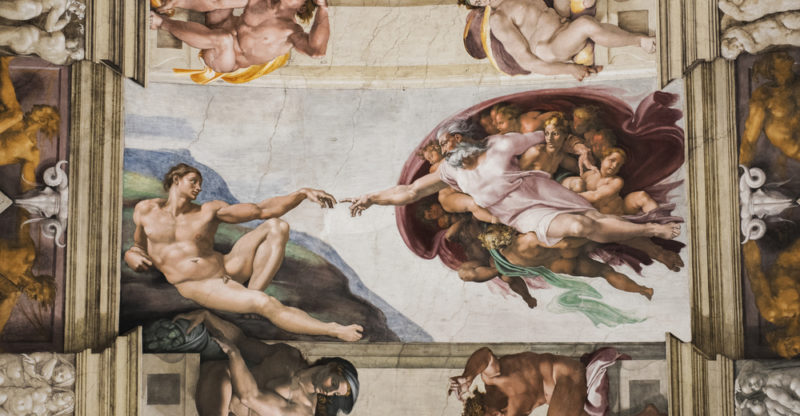
Michelangelo began painting at only twelve years of age, when he painted his Torment of Saint Anthony.
Already in this early composition the artist's genius became evident, reaching its height with the Doni Tondo in Florence between 1504 and 1505, a representation of the Holy Family on a background depicting the various stages in the history of mankind.
However, Michelangelo's masterpiece in painting was the fresco of the Sistine Chapel's Vault: a project he began in 1508 and completed four years later.
It is a fresco of colossal proportions that follows the shape of the vault, in which he painted nine scenes of the Book of Genesis, portraying the prophets, the sibyls and four ignudi (naked young men).
This colossal masterpiece was completed in 1512 despite the artist's financial difficulties, the Pope’s frequent urgency, and the fact that Michelangelo painted it entirely on his own.
Numerous scenes from this painting have become iconic, and are at the core of Renaissance European culture.
Main architectural works by Michelangelo
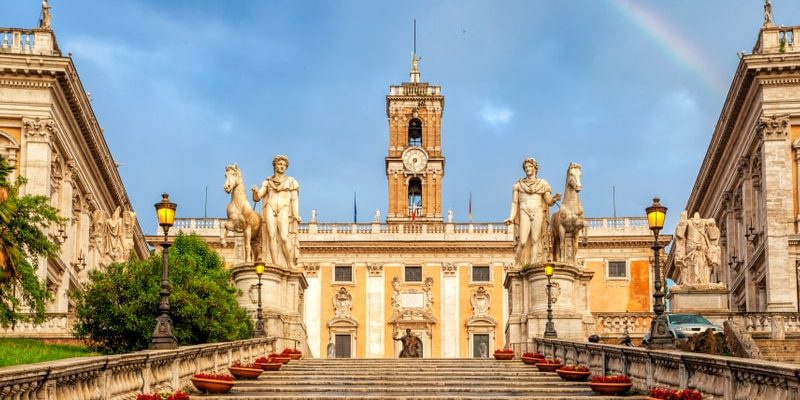
Under the commission of his patrons, the Medici, Michelangelo undertook numerous architectural reconstructions and improvements to existing palaces.
Among these works are the façade of San Lorenzo (begun in 1420 and unfinished in 1518 when the artist took over the project), and improvements to the Palazzo Medici Riccardi in 1517.
In Florence, he was charged with the renovations of the Laurentian Library, initiated in 1533 under Pope Clement VII, and in the Vatican City with the design of St. Peter's Basilica.
Furthermore, during the reconstruction of the Capitoline Square, Michelangelo altered its facade so that, instead of facing the Roman Forum, it pointed towards the new center of power: St. Peter's Basilica.
Drawings and designs by Michelangelo
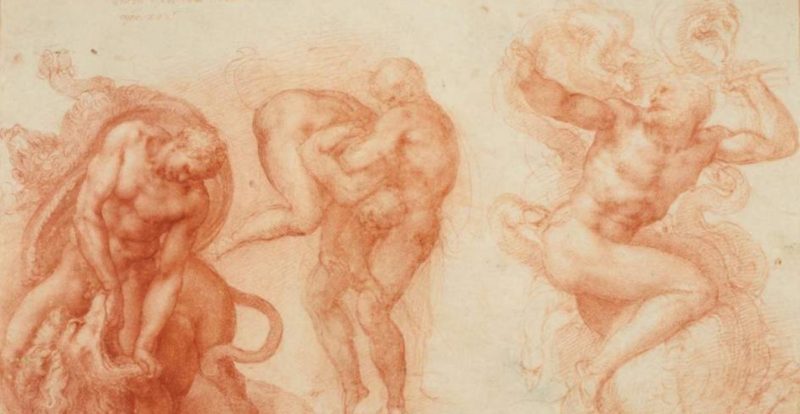
Michelangelo created a varied collection of drawings, which are regarded as incomplete masterpieces in their own right, since the artist burned numerous sketches and drawings in bonfires he himself lit.
Among these is the notable "Battle of Cascina," inspired by a chronicle by Filippo Villani, depicting the Florentine troops in combat with those of Pisa.
Also famous are his preparatory drawings for the fortifications of Florence, when Michelangelo was appointed "governor and general procurator of fortifications" following the expulsion of the Medici in 1527.
Poetic works by Michelangelo
Michelangelo also ventured into poetry, leaving some three hundred compositions in which sonnets and madrigals abound, influenced by the work of Petrarch, occasionally with satirical and humorous undertones.
Among these, the poems dedicated to his platonic love Vittoria Colonna stand out, of a markedly religious and mystical nature, which were concerns they shared.
Recognition of Michelangelo
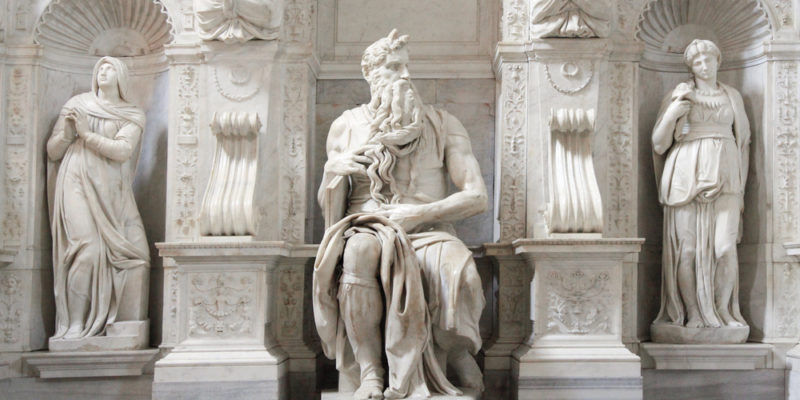
Michelangelo was the first Western artist to have two biographies published during his lifetime, in 1550 and 1553, one by Giorgio Vasari and the other by one of his disciples, Ascanio Condivi.
His contemporaries admired him enormously, calling him “The Divine one”.
Michelangelo’s name appears in the Lutheran liturgical calendar, and in addition, an asteroid discovered in 1982 and a crater on the planet Mercury bear his name. Numerous streets, squares, and avenues around the world pay homage to him.
Death of Michelangelo
Michelangelo died in Rome in 1564, leaving many of the works of his later period unfinished. He was buried in Florence, according to his wishes.
His tomb exhibits a sublime work by one of his disciples, Giorgio Vasari, designed in 1570.
References
- “Miguel Ángel” en https://es.wikipedia.org/.
- “Miguel Ángel Buonarotti: biografía, obras, esculturas y mucho más” en http://personajeshistoricos.com/.
- “Biografía y obra de Miguel Ángel Buonarotti” en https://www.arteespana.com.
- “Miguel Ángel” en https://www.biografiasyvidas.com/.
- “Las obras más famosas de Miguel Ángel” en https://miviaje.com/.
- “Miguel Ángel” en https://www.nationalgeographic.com.es/.
- “Michelangelo” en https://www.britannica.com/.
Explore next:
Was this information useful to you?
Yes NoThank you for visiting us :)